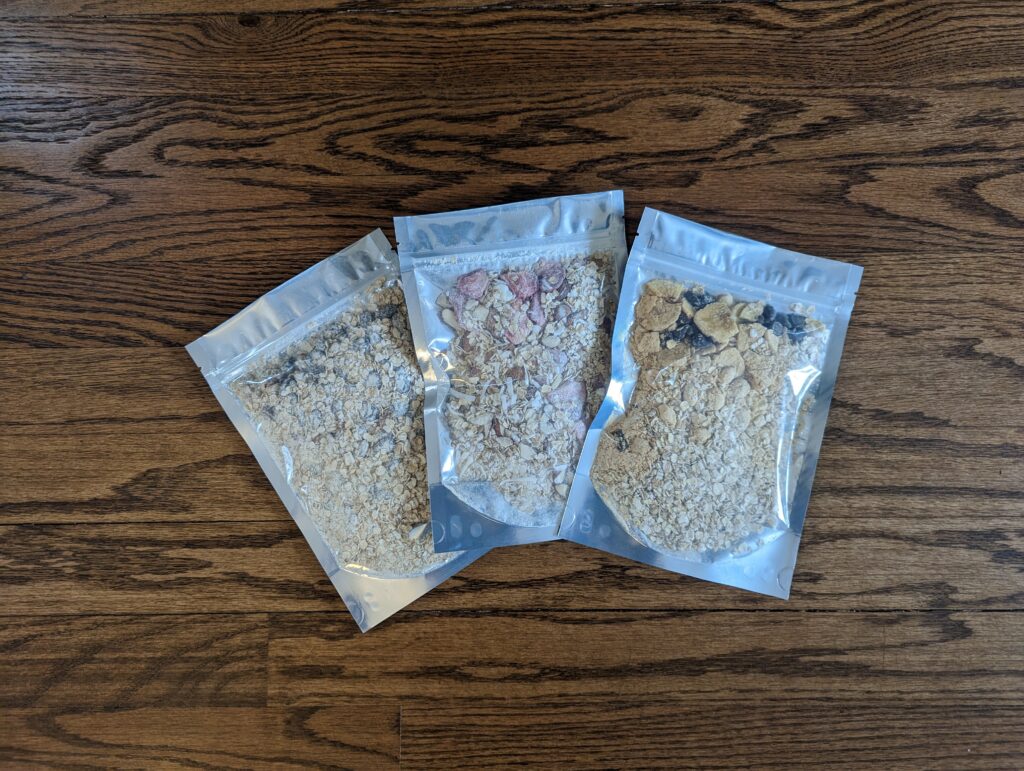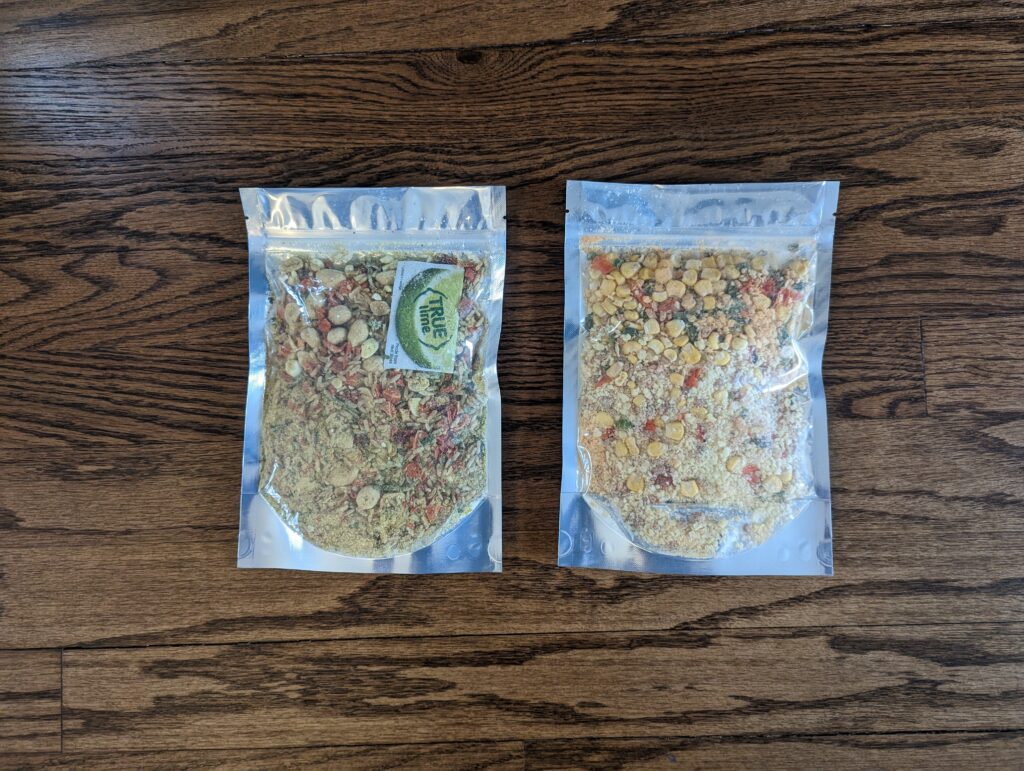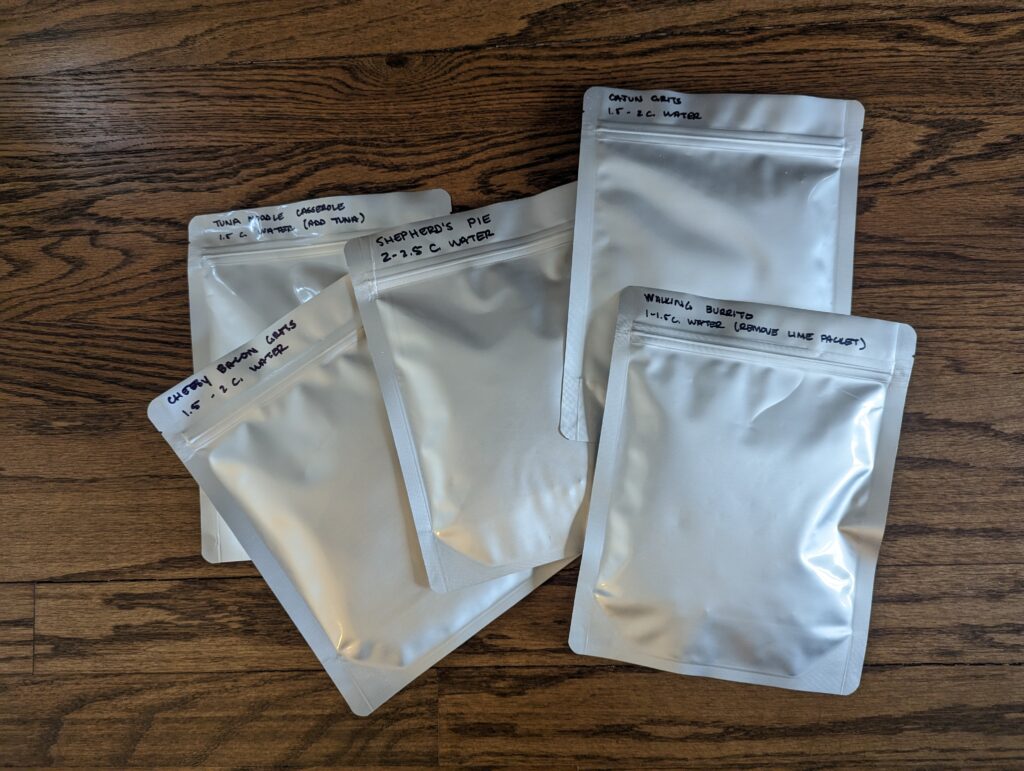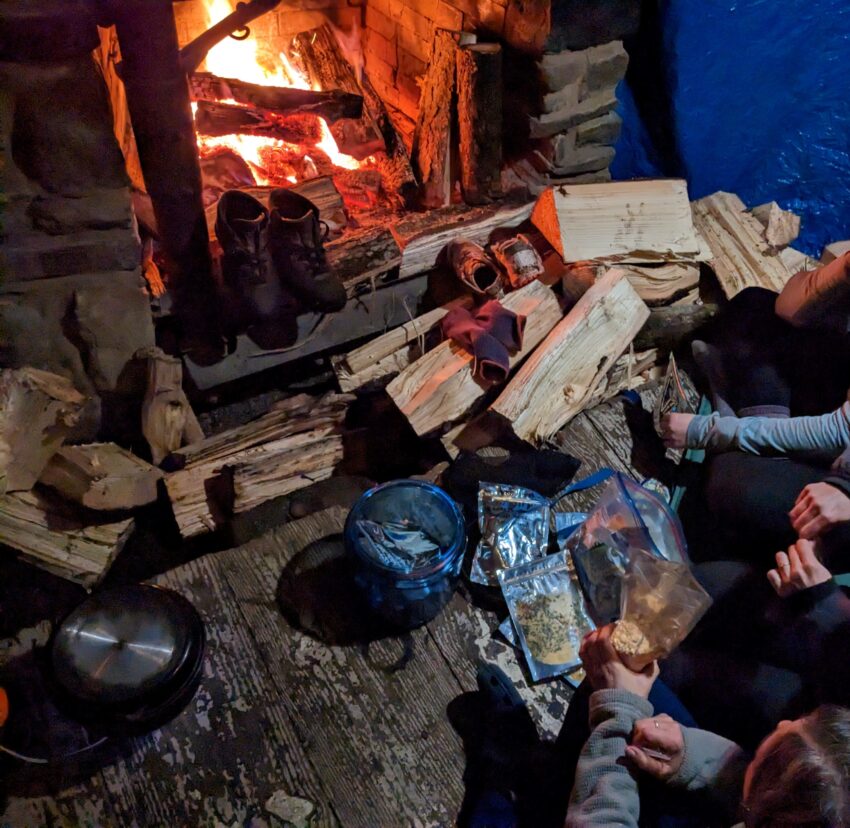When I first heard about the Appalachian Trail over 10 years ago, I thought it was pretty impressive that folks could carry enough food for six months on their backs. I eventually learned that is ridiculous. Thru-Hikers typically only carry enough food for 4 or 5 days, since road crossings and towns are common enough on the AT to provide opportunities to pick up new supplies up to several times a week. Protein bars and granola “gorp” are staples, but so too are Snickers bars for calories and protein, candy for quick bursts of sugar, salty fatty snacks like Fritos, and all the ice cream you can buy at towns along the way. Dinner is typically anything that can be either rehydrated with boiled water or heated over a camp stove. Knorr’s pasta sides have come a long way in the last 10 years, so that’s lucky I guess!
Once I finally decided to hike the AT, I quickly started thinking about the Thru-Hiker’s diet. As someone who loves to eat pretty much anything but hates to eat the same thing day after day, I wanted to make sure I wouldn’t have to rely solely on what we could find at the gas stations and other opportunistic resupply points along the trail. While being able to binge on all the candy and Doritos I can eat is secretly a dream come true, I do actually enjoy vegetables. I decided to prepare “some” meals in advance to eat while we’re on the trail, and since “overkill is underrated” I ended up with nearly 300 individually packaged dehydrated meals packed and ready to go, about 150 meals each myself and my hiking partner (hi, Mimi!).

I developed and/or adjusted five breakfasts and five dinner recipes that could be rehydrated by just adding boiling water, based around relatively quick-cooking basics: oats, grits, instant brown rice, instant mashed potatoes, and couscous. I added various dried fruits and veggies, flavoring and protein powder, and other goodies to add flavor, texture, or nutrients to keep each meal palatable and calorically useful. I used food-grade, plasticized mylar bags to hold each meal. These bags are technically reusable and can be washed out and repacked to save the plastic! After subjecting a few brave and dear friends to a taste test on a brief backpacking trip, I made a few adjustments to the recipes to back off the salt or bump up the peanuts. Then we hit production mode and assembly-lined about 20 to 30 of each recipe.
These meals will be brought or shipped to us periodically by our Ground Support Crew (hi, Nick!) and may represent up to half of our breakfasts and dinners while we’re on the AT. So, here’s what I made:
Breakfast
- Strawberry Almond Coconut Oatmeal
- Chocolate Peanut Butter Banana Oatmeal
- Cinnamon Raisin Walnut Oatmeal
- Cheesy Bacon Grits
- Cajun Grits

Dinner
- Tuna Noodle Casserole
- Shepherd’s Pie
- Potato Corn Chowder
- Coconut Peanut Curry
- Walking Burrito

The final verdict is that the meals actually taste pretty good! Not just “good enough for backpacking” but actually tasty. The final cost for each meal averages out to $3.60, making this homemade approach at least 50% cheaper than commercially-available backpacking meals. I’m excited to see how the meals fare out in the field, and prepared to balance and supplement with the gas station and ice cream counter snacks whenever necessary…or whenever we feel like it.
Thanks for stopping by!
Heather


Very impressive and awesome!!
Wow! For dried backpacking food to look and sound so yummy is a great feat! You two will be the envy of every camp and shelter !
Actually looks very good and quite professional ! Here’s to happy eating !
You are my one of the most impressive people I know! This is all so cool and actually makes me hungry:)
Wow Heather! I want to learn how to make food like you did. It sounds like you have guaranteed you will be healthy and happy with your meals!
Honorable mention!! Yes! Put that in the mail! 😘 Love you, Heather!! Your prep work is ridiculously impressive! I’m hungry just thinking about those meals 🙂
Impressive 👍 ❤️